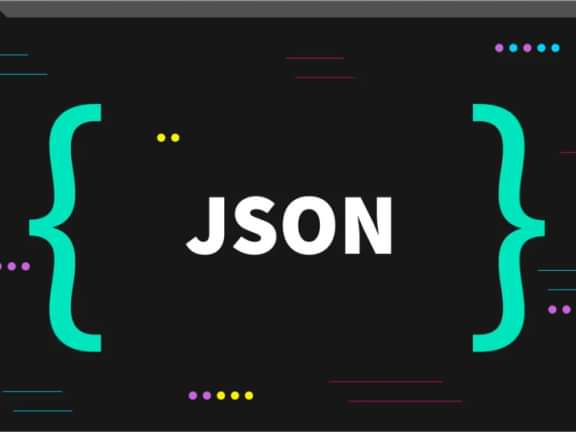SEO for Headless CMS
Headless CMS architecture can supercharge your SEO beyond traditional systems, but only if you navigate its unique challenges correctly
Understanding Headless CMS and Its SEO Implications
Imagine your website as a human body. In a traditional CMS setup, the head (frontend) and body (backend) are inseparably connected. This is like your typical WordPress site where content management and presentation are bundled together.
Now picture surgically removing that head while keeping the body functioning. Sounds like a horror movie, right? Well, welcome to the not-so-horrific world of headless CMS!
A headless CMS is essentially a content management system that focuses exclusively on storing and delivering content through APIs, without being concerned about how that content is presented to users. The "head" (the frontend presentation layer) is completely separated from the "body" (the content repository). This decoupling creates a content-first approach where your content exists independently of how it's displayed.
This architectural shift fundamentally changes how content flows to your users, and importantly, to search engines. In traditional setups, content travels a predictable path from database to rendered HTML.
With headless, your content becomes free-flowing, distributed through APIs and assembled at various endpoints, whether that's a website, mobile app, digital signage, or whatever new device emerges next Tuesday.
Websites implementing properly optimized headless architecture saw an average 18% improvement in mobile Core Web Vitals scores compared to their previous traditional CMS implementations (5)
This decoupling naturally brings some impressive SEO advantages. For starters, performance gets a serious boost. Headless architectures typically deliver lightning-fast experiences through modern JavaScript frameworks, static site generation, or server-side rendering. And as we all know, Google absolutely adores speed.
According to a 2024 study, websites using headless CMS architecture with proper rendering methods can achieve up to 30% faster load times compared to traditional CMS setups.
The omni-channel capability is another major plus. Your content can be optimized once and deployed everywhere, maintaining consistent SEO elements across all digital touch points. The flexibility to update your frontend without disrupting your content infrastructure means you can continually optimize the user experience without undergoing complete site overhauls.
However, this architectural freedom comes with its challenges. Many traditional SEO tools and workflows that marketers have grown dependent on suddenly vanish. That familiar WordPress SEO plugin with its reassuring green lights? Gone. The built-in redirect manager? Disappeared. The visual editor that showed exactly how your meta description would appear in search results? A distant memory.
Search engines also interact differently with JavaScript-heavy implementations common in headless architectures. While Google has significantly improved its JavaScript rendering capabilities, there's still what's known as the "rendering gap", the delay between when Google discovers your content and when it actually renders and indexes the JavaScript-dependent elements. Other search engines might lag even further behind in this capability.
Essential SEO Components to Configure in Your Headless CMS
When transitioning to headless, you'll need to recreate the SEO infrastructure you previously took for granted. Start by structuring metadata management within your content models. This means explicitly creating fields for SEO elements within your content types.
For example, your "Blog Post" content type should include dedicated fields for title tags, meta descriptions, and canonical URLs. These fields should come with character count indicators and preview functionality to guide content creators. Think of it as building your own SEO plugin, piece by piece.
contentType: "blogPost" {
fields: {
title: String (required),
content: RichText,
seoTitle: String (max: 60),
seoDescription: String (max: 160),
canonicalUrl: String (format: url),
...
}
}
Technical SEO Elements
They require particular attention. Your robots.txt, XML sitemaps, and structured data no longer have default locations or implementations. You'll need to programmatically generate these assets, typically through your frontend build process or dedicated API endpoints. For instance, your sitemap might be generated during build time for static sites or served dynamically through an API for more frequently updated content.
Heading hierarchy and semantic HTML remain crucial for SEO, but now the responsibility shifts entirely to your frontend implementation. Your content model should clearly distinguish between different heading levels, and your frontend components must consistently render them with appropriate HTML tags (<h1>, <h2>, etc.). It's surprisingly easy for these fundamentals to get lost in the excitement of building a cutting-edge headless site.
Image optimization presents another interesting challenge. Your content model should require alt text for all images, but the actual delivery of those optimized images often falls to specialized image CDNs or processing services. Solutions like Cloudinary, Imgix, or custom image processing APIs become essential parts of your SEO infrastructure, handling responsive sizing, format optimization, and delivery optimization.
Overcoming JavaScript SEO Challenges in Headless Environments
The "JavaScript rendering gap" mentioned earlier deserves deeper exploration. When a search engine crawler encounters a traditional HTML page, it immediately discovers and understands the content.
Infact, Google's JavaScript rendering capabilities have significantly improved, with approximately 98% of JavaScript-heavy sites now being correctly indexed, though with an average delay of 5-7 days compared to HTML-only sites.(2)
With JavaScript-rendered content, there's a two-phase process: first, the crawler discovers the basic HTML shell; later (sometimes much later), it renders the JavaScript and discovers the actual content. This gap can delay indexing and potentially impact rankings.
To address this, you have three primary architectural options, each with distinct SEO implications:
Client-side rendering (CSR) puts the rendering burden on the user's browser, which means search engines see very little content on the initial HTML response. This approach offers development simplicity but creates the most significant SEO challenges.
Server-side rendering (SSR) pre-renders pages on the server for each request, delivering complete HTML to search engines and users alike. This eliminates most JavaScript SEO issues but can increase server load and time-to-first-byte.
Static site generation (SSG) pre-builds all pages at deploy time, providing the SEO benefits of server rendering with the performance advantages of serving static files. This works beautifully for content that doesn't change frequently but requires rebuilds when content updates.
Many modern projects adopt a hybrid approach called "incremental static regeneration" that combines these methods, using static generation for most pages while selectively rebuilding pages when content changes.
Building Effective Content Workflows for SEO in Headless Systems
One of the most jarring transitions for content teams moving to headless is the loss of immediate visual feedback. In traditional CMS platforms, what you see in the editor closely resembles what users (and search engines) will see. In headless systems, this connection is broken.
To address this, create content preview environments that include SEO elements. These previews should render your content exactly as it will appear on your live site and include visual indicators for SEO elements, which show how title tags will truncate in search results. For example, they will highlight missing alt text on images, etc.
Content governance takes on new importance in headless environments. Develop clear style guides and templates that incorporate SEO best practices, and consider implementing validation rules that prevent content publication when critical SEO elements are missing. For instance, you might block publishing if meta descriptions exceed character limits or if images lack alt text.
URL structures and redirects: Typically handled automatically in traditional CMS platforms, they now require explicit management. Your headless CMS should include a redirect management system that works with your frontend routing solution. Some teams maintain redirect maps as part of their codebase, while others store them in the CMS or a dedicated service.
Measuring SEO Performance in Headless Architectures
Once your headless site is live, tracking performance becomes critical. Implementing analytics in headless environments typically involves both client-side and server-side tracking to capture the complete user journey. Google Analytics 4's event-based model works well with headless architectures, but requires careful implementation to avoid data loss during page transitions in single-page applications.
For tracking rankings and visibility, the same external tools used for traditional sites (SEMrush, Ahrefs, etc.) remain valuable, but you'll want to segment data to isolate the impact of architectural changes from content changes. This is particularly important during migration periods when you might be running both headless and traditional sites simultaneously.
Core Web Vitals monitoring takes on heightened importance in headless implementations. The performance benefits promised by headless architecture only materialize with careful frontend optimization. Use field data from Chrome User Experience Report (via Google Search Console) alongside lab data from Lighthouse and WebPageTest to identify optimization opportunities.
A/B testing SEO changes becomes more complex but also more powerful in headless environments. The ability to deploy different frontend implementations against the same content API allows for clean testing of rendering approaches, layout changes, and UX modifications. Just ensure your testing approach doesn't create duplicate content issues or confuse search engines with rapidly changing implementations.
Real-World Success: Headless CMS SEO Case Studies
Implementing SEO in a headless CMS environment isn't simply about replicating what worked in traditional systems, it's about leveraging the unique advantages of decoupled architecture while addressing its specific challenges. The flexibility, performance, and scalability benefits of headless systems can actually become powerful SEO assets when properly harnessed.
The key lies in intentional planning. Build SEO considerations into your content models from the start, select the right rendering approach for your specific needs, and establish workflows that maintain SEO best practices throughout the content lifecycle. While the initial learning curve might feel steep for teams accustomed to all-in-one CMS solutions, the payoff in site performance and flexibility makes the effort worthwhile.
As search engines continue to emphasize user experience metrics in their ranking algorithms, the performance advantages of headless architectures will likely become even more valuable for SEO. By mastering these techniques now, you're not just solving today's SEO challenges, you're positioning your digital presence for future search success.
Ready to take your headless CMS SEO to the next level? Start by auditing your current implementation against the strategies outlined above, and systematically address any gaps you discover. Your search rankings, and your users, will thank you.
Continue reading.
The Element API plugin is a very powerful tool that you can use for quickly exposing your data structures to an external source.
Read moreA brief introduction to consensus mechanisms and why proof of stake is the right move for Ethereum.
Read moreLet's chat about your project
Portland, OR 97215



